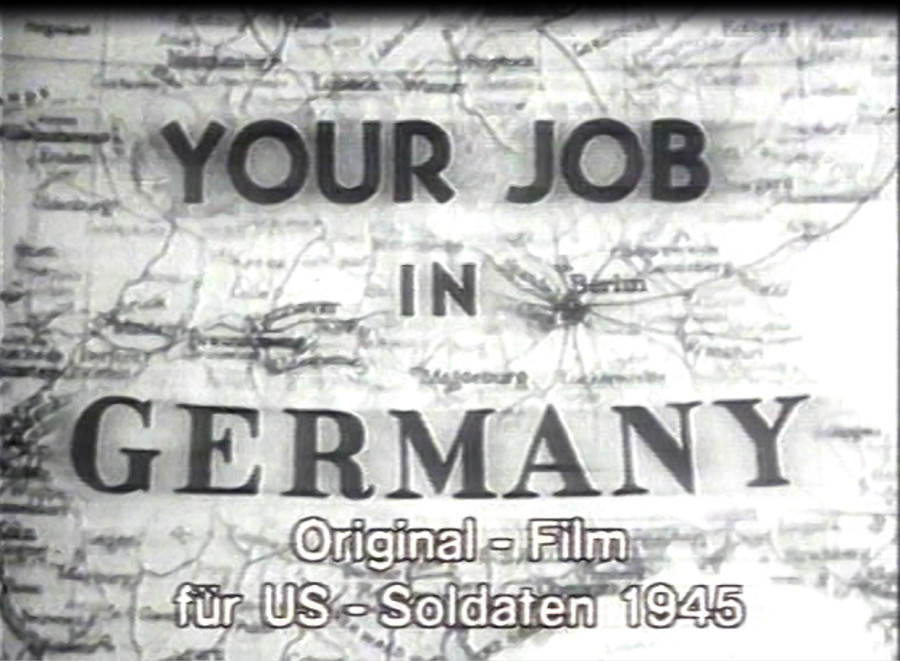Dr Seuss Google Doodle: Homage Paid To The Author, Poet And Cartoonist
Dr Seuss Google Doodle
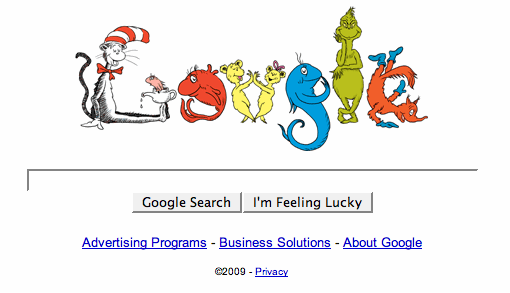
March 2nd 2009 saw Google pay homage to globally acclaimed author, poet and cartoonist Theodor Geisel, better known as his pen name Dr Seuss. The Dr Seuss Google Doodle celebrated what would have been the good doctors 105th Birthday. Strangely for a doodle the artwork for the Dr Seuss Google Doodle was not commissioned by a member of the search engines team of doodlers. Instead the artwork was provided by Dr Seuss Enterprises. The Dr Seuss Google Doodle, which can still be viewed by clicking here. It featured a number of his famous characters. To demonstrate on the Dr Seuss Google Doodle, the first “G” of the Google logo was comprised of the Cat in the Hat conversing with the talking fish in a teapot. Whilst the “L” was formed by a depiction of the Grinch who stole Christmas. The Dr Seuss Google Doodle was a wonderful credit to the author, poet and cartoonist.
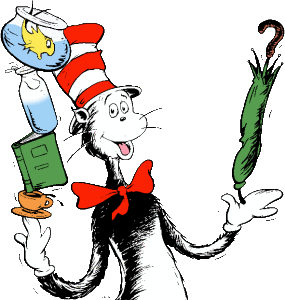
Geisel was born on March 2nd 1904 in the town of Springfield in the U.S. state of Massachusetts. All four of his grandparents were German immigrants to America. His father, also named Theodor Geisel, managed the family brewery until it was forced to close due to prohibition. After this time he managed the Springfield public park system. In 1917 the good doctor enrolled at Springfield Central High School, he graduated from the school four years later in 1921. His education continued at Dartmouth College. He attended the college until his graduation in 1925. His writing ability was quickly recognised whilst at the College. He became a contributor to the college’s humorous magazine, “The Dartmouth Jack-O-Lantern”, which he went on to become the editor in chief of.
Geisel found himself in trouble at the College, after he was caught with nine of his friends drinking gin. As a consequence of this the Dean, Craven Laycock insisted that Geisel resign from all of the extracurricular activities in which he was involved. This included Geisel’s resignation from the college’s magazine. However Geisel continued to submit work to the Jack-O-Latern unbeknown to the magazine’s administrator. This was when Geisel began to work under the pseudonym “Seuss”.
After his successful graduation from Dartmouth, Geisel went on to study at Lincoln College, Oxford. Here he intended to gain a PhD in English Literature. However this was not to be. Geisel left Oxford before completing his degree and returned to the U.S. in the February of 1927. After his arrival in the U.S. he launched on a spree of submissions. During this period he submitted many pieces of his work to various magazines, book publishers and even to advertising agencies. Five months later he was rewarded with his first nationally published cartoon. The magazine in question was The Saturday Evening Post, which featured his cartoon in its July 16th 1927 issue. The sale of the cartoon equated to a total value of $25. However it inspired the young Geisel to move from Springfield to the city of New York.
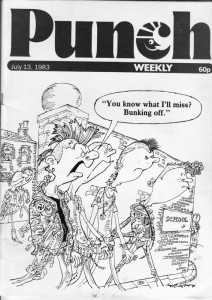
The same year Geisel accepted a post at the humour based magazine Punch. He worked here as a writer and illustrator. This posting provided him with sufficient financial security to marry Helen Palmer who he had met at Oxford. It was Palmer who encouraged Geisel to abandon his ambition to become an English teacher in favour of pursuing a career as an illustrator and author. Geisel’s first item of work signed with the pseudonym “Dr Seuss” appeared in Punch six months after he began working there.
When the Great Depression brought the American economy to its knees, Geisel was able to support himself and Helen through his illustrations. During this time he drew illustrations for a number of leading American companies. These companies included, NBC, General Electric and Standard Oil among others.
Geisel’s income enabled him and Helen to travel extensively. By 1936 the couple had travelled to over 30 different countries together. Despite the fact that neither of the couple worked standard office hours they enjoyed an increase in their social status enabling them to mix with the upper echelons of society.
The outbreak of the Second World War saw Geisel turn to satirical political cartoons. Many of these cartoons appear in the book, “Dr Seuss Goes to War”. His cartoons were extremely critical of Hitler and Mussolini. In addition he also criticised American non-interventionists and isolationists, most notably Charles Lindbergh. His cartoons also denounced American wartime racism against African Americans and Jews, which he felt damaged the war effort.
1942 saw Geisel turn his efforts to direct support for the war effort. He began serving the Treasury Department and the War Production Board where he drew posters. 1943 witnessed Geisel officially joining the army. He joined as a Captain and went on to become commander of the Animation Department of the First Motion Picture Unit within the U.S. Air Force. During this time he penned a number of films. These films included “Your Job In Germany”. This was an educational film informing American troops about post war peace in Europe. This film was followed by “Our Job In Japan” and the “Private Snafu” series. The Private Snafu films were army training films.
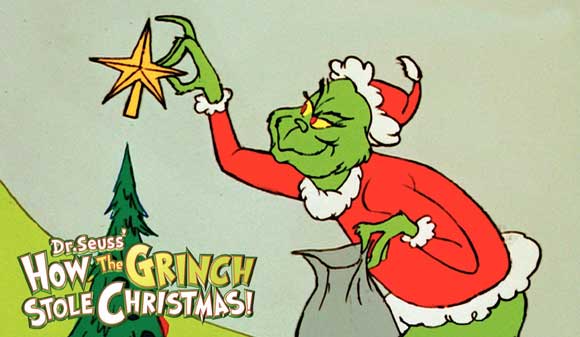
Following the end of the war Geisel and Helen moved to the Californian town of La Jolla. Here he began writing many of the children’s books for which he is perhaps best known. A spree of creativity witnessed Geisel penning many of his best known books in a space of just ten years. These timeless favourites include, If I Ran The Zoo (1950), Horton Hears A Who (1955), If I Ran The Circus (1956), The Cat In The Hat (1957), The Grinch Who Stole Christmas (1957), and finally Green Eggs And Ham (1960).
It was not just Geisel’s industrious productivity which is impressive, many of his children’s books went on to outsell the majority of other children’s books published during the time.
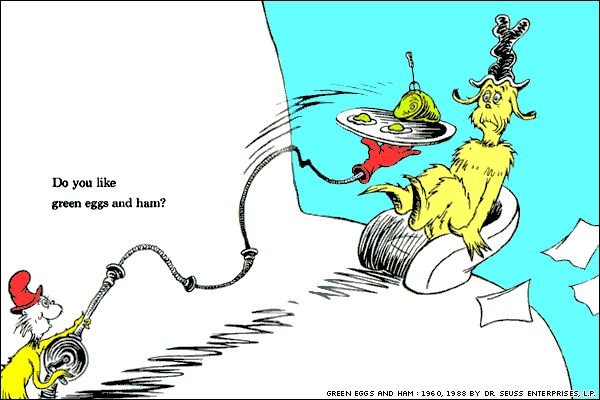
After battling with a number of illnesses including cancer and being overcome by the emotional pain caused by her husband’s long term affair with Audrey Stone Dimond, Helen Palmer committed suicide. Palmer died on the 23rd of October 1967. The following year saw Geisel marry Dimond, the service occurred on June 21st 1968.
Geisel was to have his own battles with cancer which he ultimately lost resulting in his death on September 24th 1991, due to throat cancer. He died in his home in La Jolla aged 87 years old.

